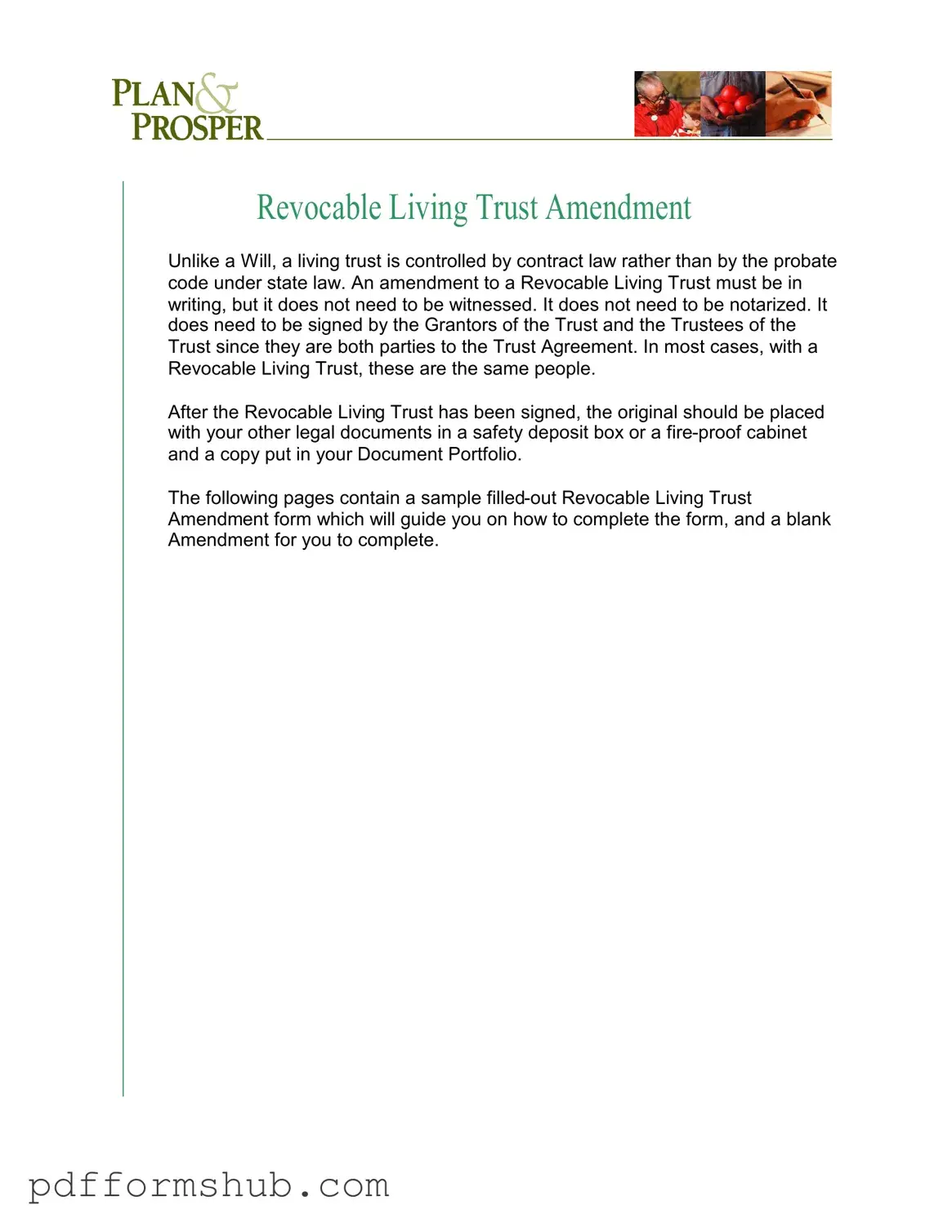Managing a Revocable Living Trust can be a straightforward process, especially when it comes to making amendments. The Trust Amendment form allows Grantors and Trustees to modify the terms of their existing trust agreement without the need for a witness or notarization. This flexibility is crucial for those who want to adapt their trust to changing circumstances, such as family dynamics or financial situations. The form requires signatures from both the Grantors and Trustees, who are often the same individuals in a typical Revocable Living Trust setup. Once completed, it’s essential to store the original document safely, along with other important legal papers, while keeping a copy readily accessible in your Document Portfolio. This article will walk you through the key components of the Trust Amendment form, providing a sample filled-out version and a blank template for your convenience. Understanding how to properly amend your trust can help ensure that your wishes are honored and that your estate plan remains effective.
